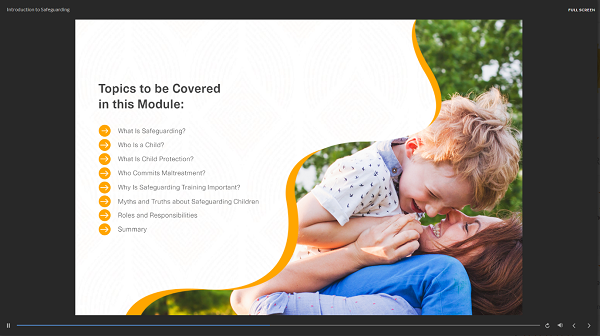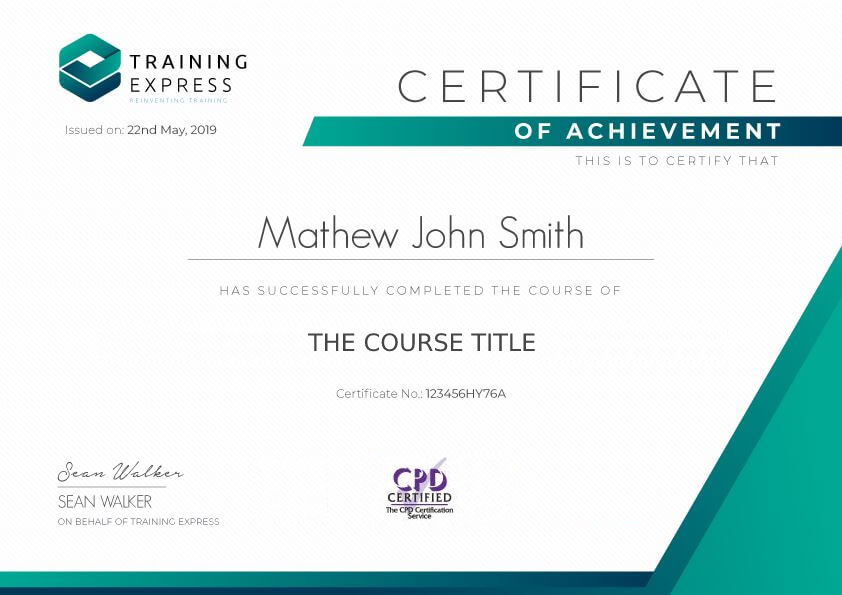-
Module 1: Introduction to Safeguarding
00:21:00 -
Module 2: Laws and Guidance
00:42:00 -
Module 3: Child Abuse
00:48:00 -
Module 4: Child Sexual Exploitation.
00:39:00 -
Module 5: Risks and Risk Assessment
00:16:00 -
Module 6: Responding to Disclosure and Reporting
00:32:00 -
Module 7: Things to Do after Referral
00:22:00 -
Module 8: Record Keeping
00:17:00
Coming soon...
Instructors
Course Reviews
No Reviews found for this course.
Course Info

Categories :

Lessons : 8

Assignments : No assignments

Duration : 3 hours, 57 minutes

Access : 1 year







